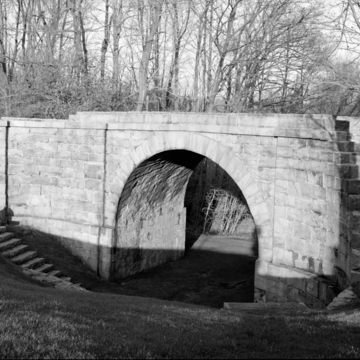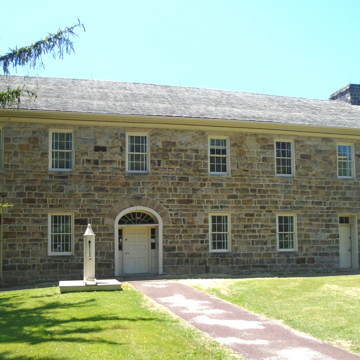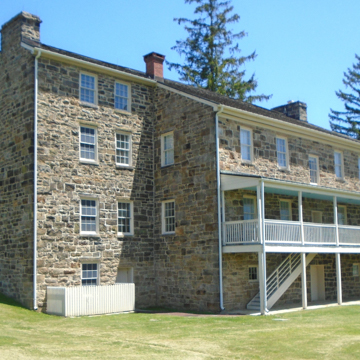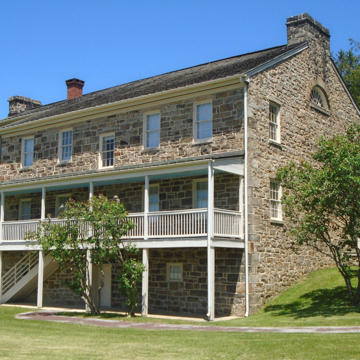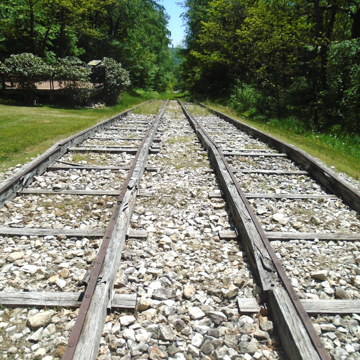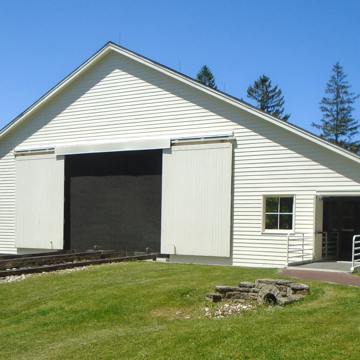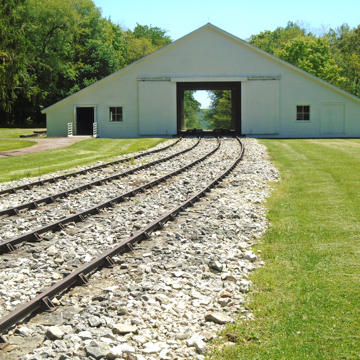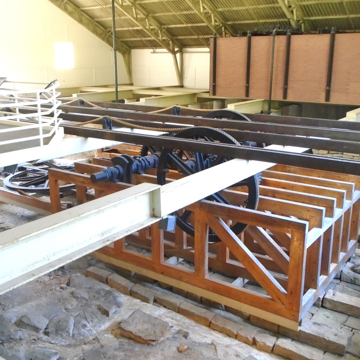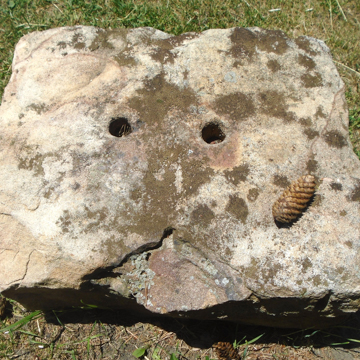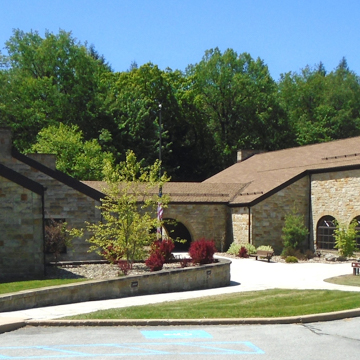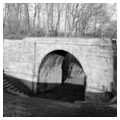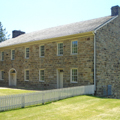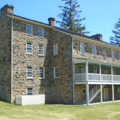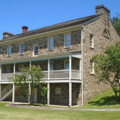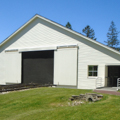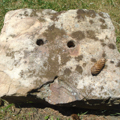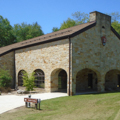You are here
Allegheny Portage Railroad National Historic Site (Samuel Lemon Tavern)
Samuel Lemon had the good fortune to own the land and operate a tavern at Cresson Summit along the Huntingdon, Cambria, and Indiana Turnpike when the Allegheny Portage Railroad (APRR) came through in 1834. The original log tavern was quickly replaced with a larger stone building, which served as both an inn and residence. Built at the top of incline No. 6 of the APRR system as it made its way over Allegheny Mountain from Hollidaysburg to Johnstown, the seven-bay, two-story stone house faces the tracks within a hundred yards of the stationary engine house. Built on the traditional Pennsylvania five-bay, central-hall plan, the house was enlarged with two smaller-scaled bays at the west in the first decade of the twentieth century. The main entrance has a delicate fanlight above the door, while two simpler entries have rectangular transoms.
The house is now the centerpiece of a National Historic Site, which includes the path of the inclined plane, the preserved foundations of the engine house, and a stone bridge over the incline. These elements provide a tangible impression of what the area looked like in the 1830s and 1840s.
The stone skew arch bridge (technically in Blair County) was built 1832–1833 by J. Fenton, A. and J. Darling, and R. Kinimouth to carry the Huntingdon, Cambria, and Indiana Turnpike over the Portage railway. The bridge marked the intersection of two technologies:
In 1992, a visitors' center opened in two gable-roofed, stone-faced buildings joined by an archway that mimics the opening of the Staple Bend Tunnel ( CA11). A short walk east, the modern wheelhouse, sheltering the remains of the stationary engine that formerly pulled railcars up the incline, was designed by Ken Bennet with technical review by Harold LaFleur, both of the National Park Service. The structure resembles the original wheelhouse.
Writing Credits
If SAH Archipedia has been useful to you, please consider supporting it.
SAH Archipedia tells the story of the United States through its buildings, landscapes, and cities. This freely available resource empowers the public with authoritative knowledge that deepens their understanding and appreciation of the built environment. But the Society of Architectural Historians, which created SAH Archipedia with University of Virginia Press, needs your support to maintain the high-caliber research, writing, photography, cartography, editing, design, and programming that make SAH Archipedia a trusted online resource available to all who value the history of place, heritage tourism, and learning.


